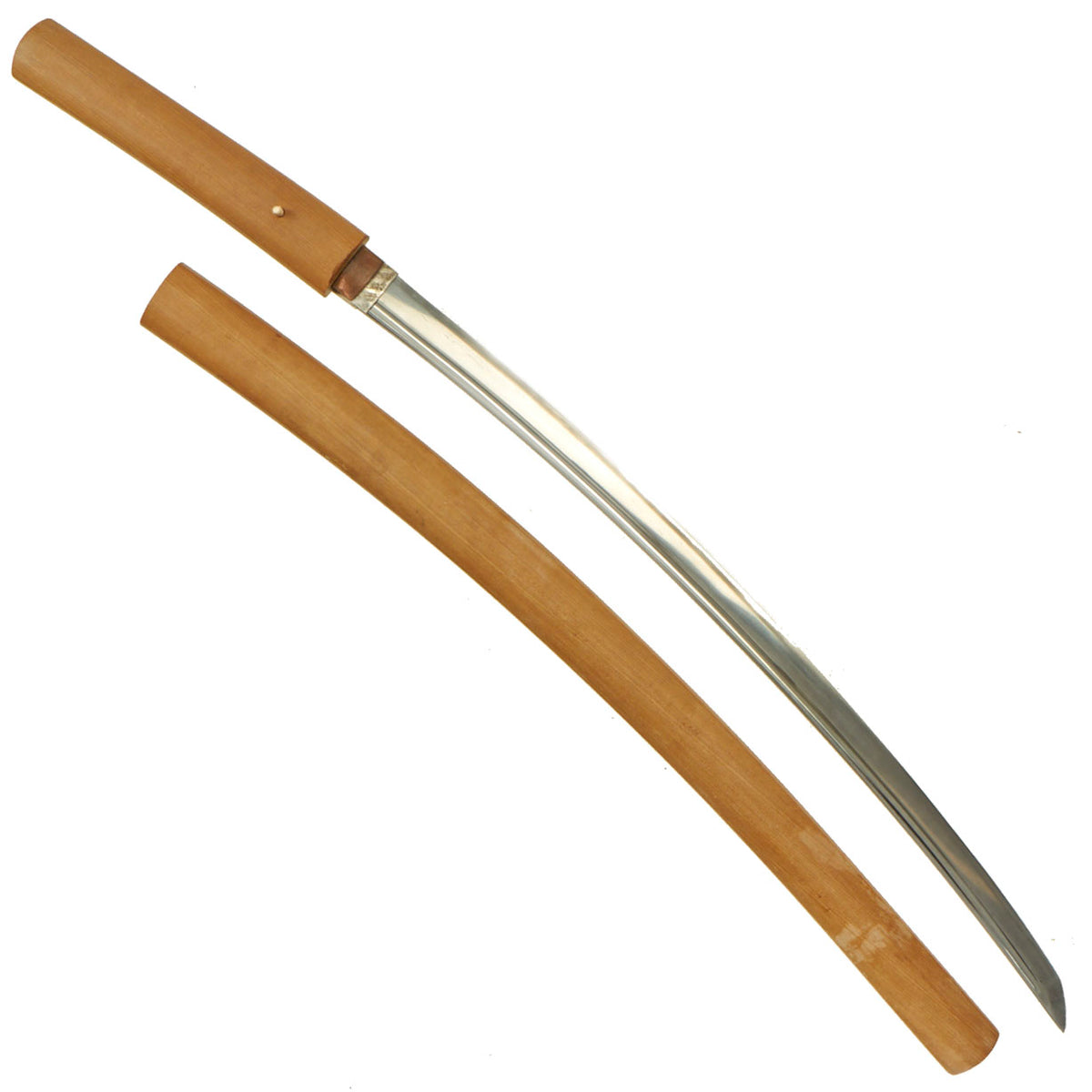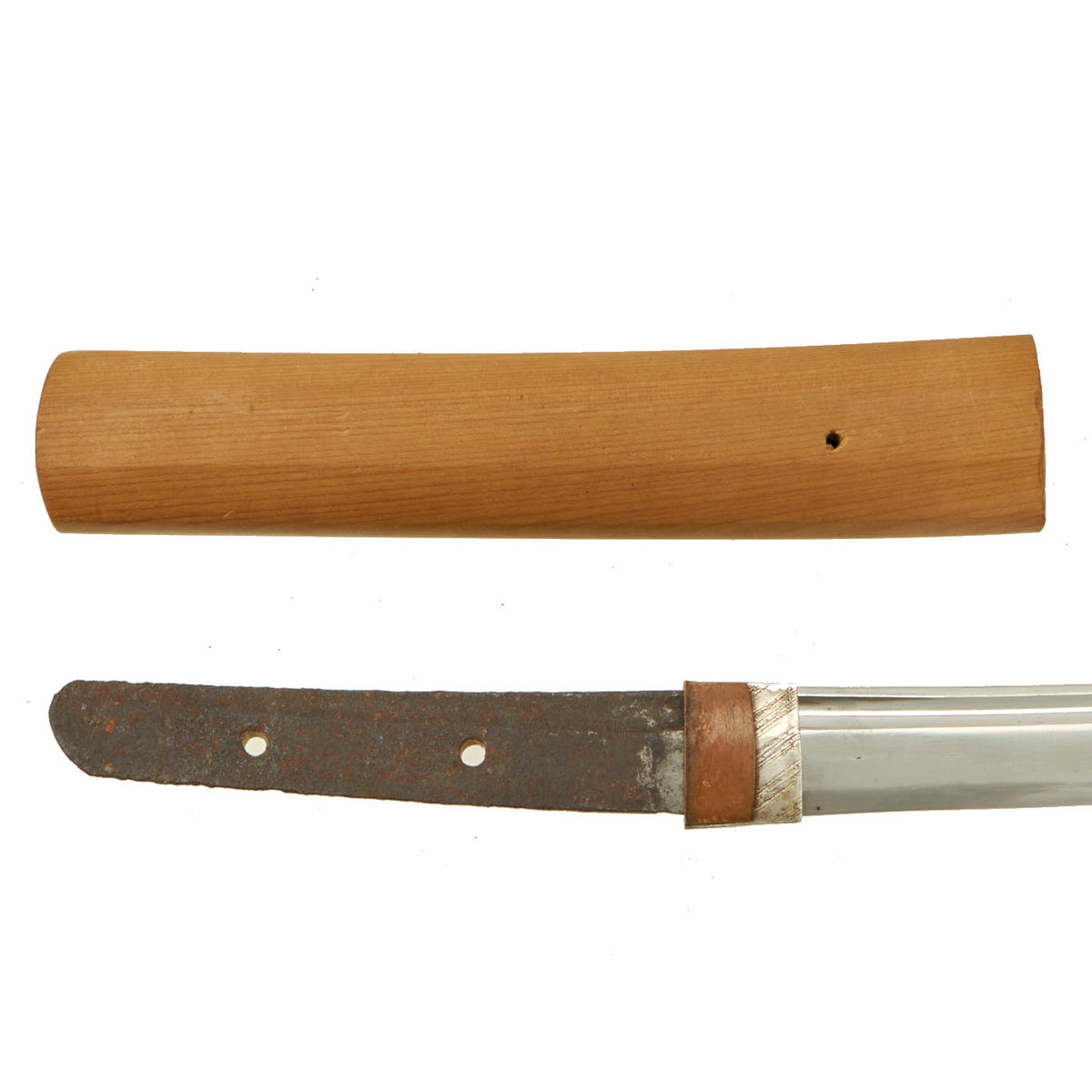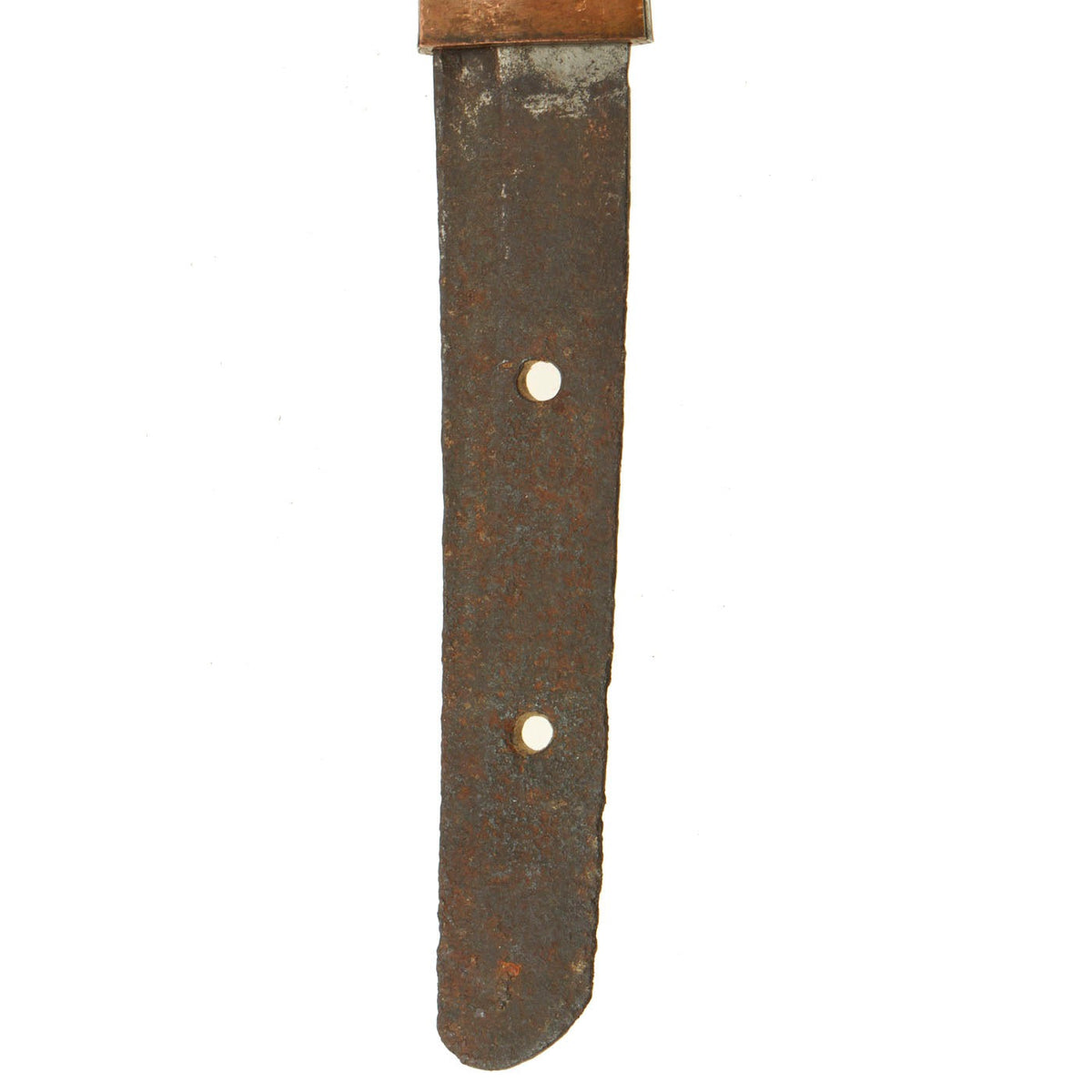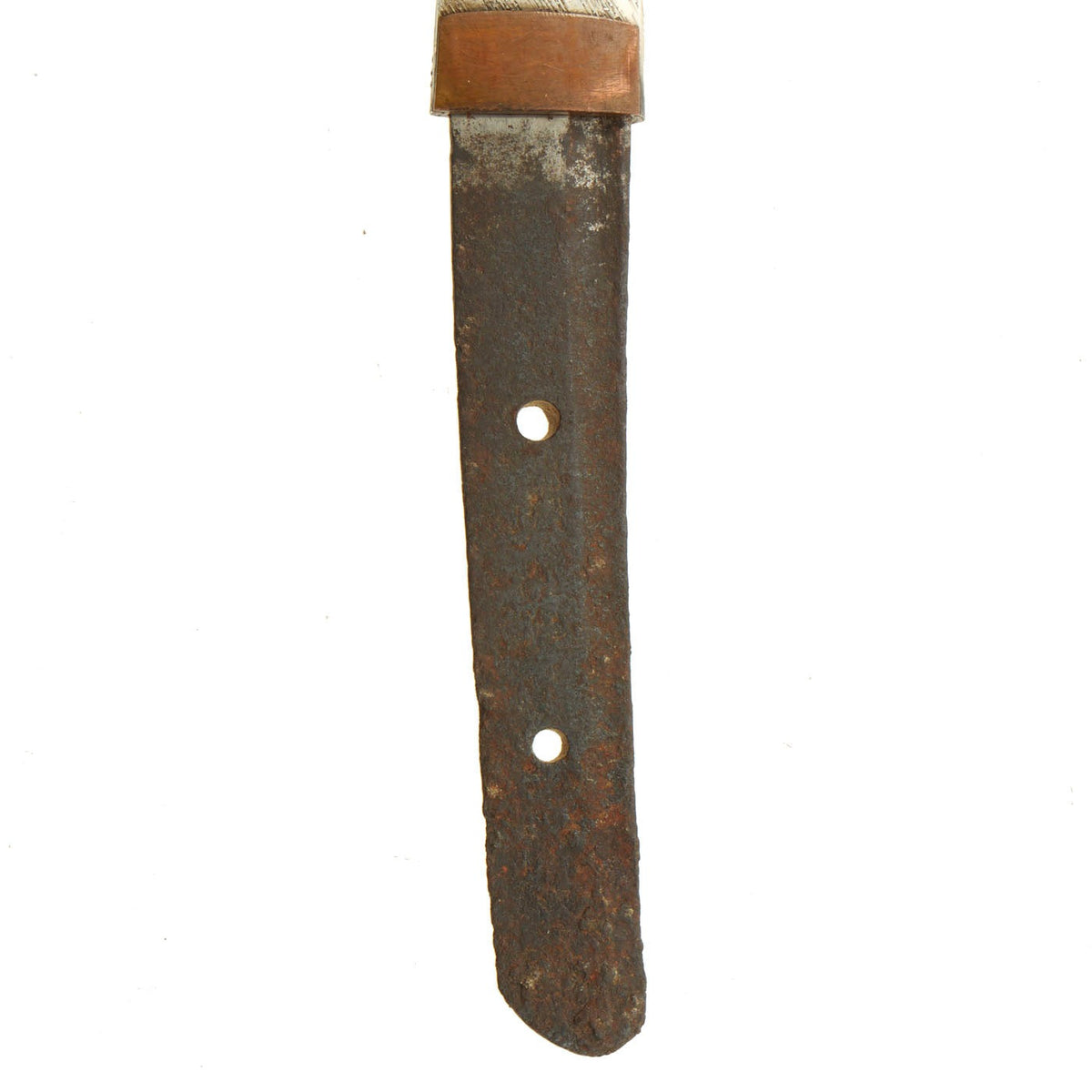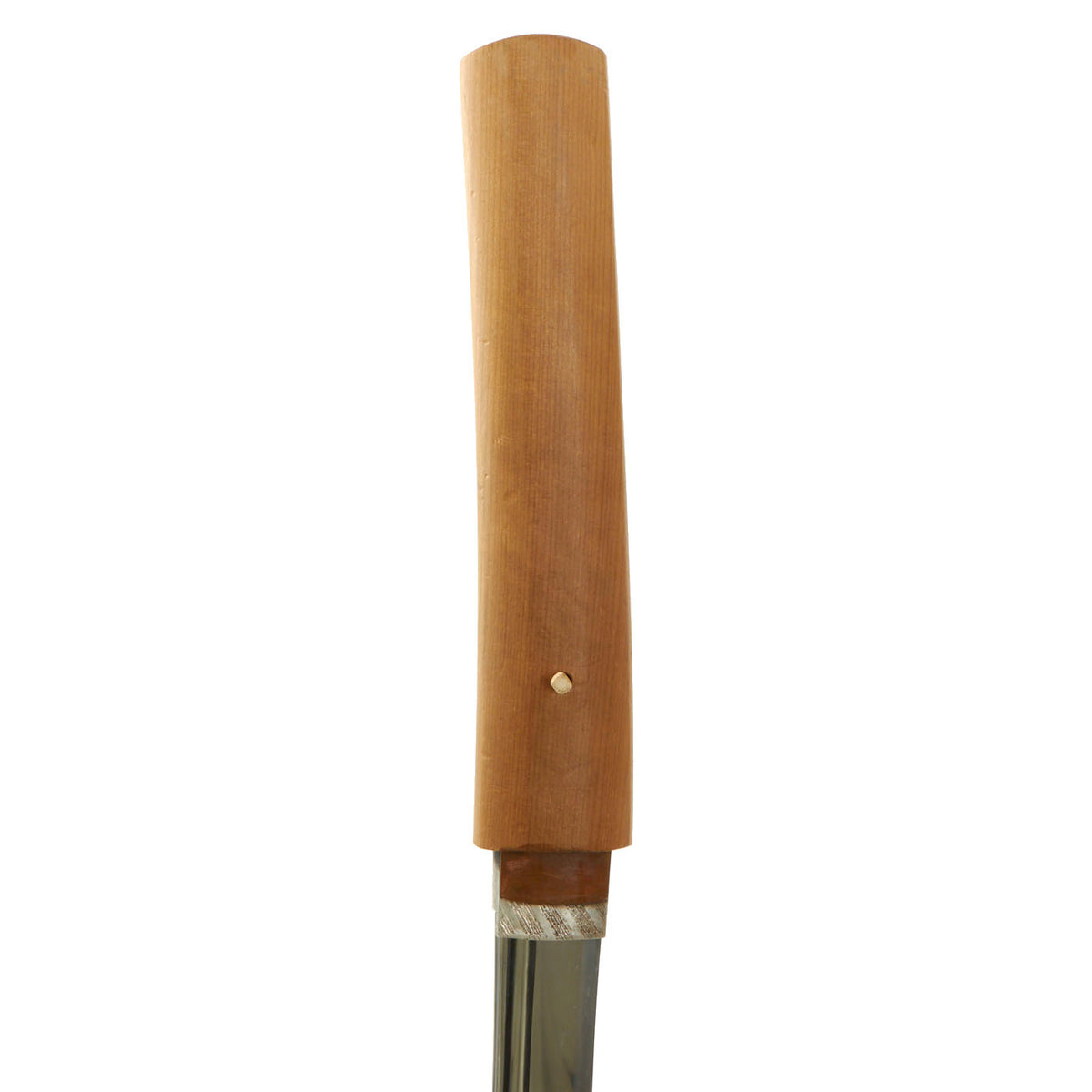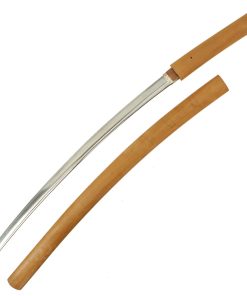Original 17th Century Edo Period Japanese O-Wakizashi Short Sword with Handmade Blade in Resting Scabbard Original Items
$ 2.495,00 $ 623,75
Original Item: Only One Available. Wakizashi (脇差 “side inserted / companion sword”) is a general term for a sword with an edge between one and two shaku long (30 cm and 60 cm), predominantly made after 1600. Generally it is the short blade that accompanies a katana in the traditional samurai daisho pairing of swords, but may be worn by classes other than the samurai as a single blade, also worn edge up as the katana.
This example dates from the Edo period (江戸時代, Edo jidai) or Tokugawa period (徳川時代, Tokugawa jidai) of Japanese history. This is the period between 1603 and 1867, when Japan was under the rule of the Tokugawa shogunate and the country’s 300 regional daimyo. As it is on the longer side, it may be termed an “O-Tanto”, or Long Tanto, as it resembles a standard Katana in shape, but is just a few inches shorter.
This example has most likely been remounted several times, as was common for Japanese blades. It also has oxidized over the centuries, resulting in some scaling on the surface, often seen on old blades. This has made the file marks (yasurimi) on the tang faint, and given it a lovely patina. There are two holes (mekugi-ana) in the tang, so the cutting edge may have been somewhat longer previously.
We can see that there definitely used to be a mei (signature) on the correct area of the blade, however we can only make out a few partial strokes of each character. As there is no clear maker name on the tang, this blade is considered 無名 (mumei), or “anonymous”. An expert however may be able to use rice paper, ink, and other tools to help read the tang.
The blade has the following period correct features:
– Folded steel blade (fold lines are evident on the spine and body of the blade)
– holes in the tang are punched and not drilled
– blade has a temper line (hamon), which is easily visible.
– Blade wounds (kizu) or lamination artifacts are present on the blade. Both ware (lamination lines) and fukure (carbon pits) are visible.
– blade has a bo’hi (fuller) near the spine on both sides, running nearly the full length of the blade.
The blade of this example is 21 1/2 inches long, and the polish on the blade is very good, showing characteristics of the blade clearly. Overall length of this wakizashi is 30 inches. The hamon (temper line) is still visible, and is of the SUGUHA (straight) type, with a lot of activity visible inside. Nie Crystals are visible, and there is Nioi cloudiness visible with lamination lines. The tang (nakago) is of the futsu 普通 (regular) style, with a Haagari (asymmetrical rounded) nakago-jiri.
The body of the blade shows faint MASAME (straight) Hada (grain), and the boshi (tip temper line) is of the YAKIZUME (no turnback) type, with the yokote crisp. There are blade wounds including ware (lamination splits) and fukure (Carbon pits). The sword has a copper and nickel Habaki (blade collar), which is typical of the Edo period.
This sword is mounted in a “resting scabbard” or Shirasaya, which is intended for storing the blade when it is not in use. There is some staining on the exterior, but no major damage. There is no splitting along the seam that we can see, and it really is quite lovely. The handle is quite tight on the tang, and may require a rubber mallet to remove.
A fantastic Edo Period O-wakizashi in great polish with a very nice resting scabbard. Ready to cherish and display!
Specifications:
Blade Length: 21 1/2″
Overall length: 30“
Scabbard Length: 23 1/2″
It has been over one thousand years ago that the art of making swords appeared in Japan. The swordsmiths of the time may not have known it but they were creating a legendary sword. The Samurai sword has seen combat in many battlefields. From the early days of the Samurai warrior to the fierce battles in the South Pacific during WWII.
Each hand-made Japanese blade (日本刀 – Nihonto) is unique because it is forged from multiple pieces of folded steel stock. A tremendous amount of work is dedicated to creating these pieces. They were an instrument of war as much as a beautiful artifact to adorn a room.
The traditional Japanese blade and mountings have grown to be one of the most highly desired military antiques.
Fast Shipping with Professional Packaging
Thanks to our longstanding association with UPS FedEx DHL, and other major international carriers, we are able to provide a range of shipping options. Our warehouse staff is expertly trained and will wrap your products according to our exact and precise specifications. Prior to shipping, your goods will be thoroughly examined and securely secured. We ship to thousands clients each day across multiple countries. This shows how we're dedicated to be the largest retailer on the internet. Warehouses and distribution centres can be located throughout Europe as well as the USA.
Note: Orders with more than one item will be assigned a processing date depending on the item.
Before shipping before shipping, we'll conduct a thorough inspection of the items you have ordered. Today, the majority of orders will be delivered within 48 hours. The delivery time will be between 3-7 days.
Returns
The stock is dynamic and we cannot completely manage it because multiple stakeholders are involved, including our factory and warehouse. So the actual stock may alter at any time. It's possible that you may not receive your order once the order has been made.
Our policy is valid for a period of 30 days. If you don't receive the product within 30 days, we are not able to issue a refund or an exchange.
You can only return an item if it is unused and in the same state as the day you received it. You must have the item in its original packaging.
Related products
Uncategorized
Uncategorized
Uncategorized
Band of Brothers ORIGINAL GERMAN WWII Le. F.H. 18 10.5cm ARTILLERY PIECE Original Items
Uncategorized
Uncategorized
Australian WWII Owen MK1 Machine Carbine SMG Custom Fabricated Replica with Sling Original Items
Uncategorized
Uncategorized
Uncategorized
Angolan Rebel 1970s era 60mm Inert Display Mortar from Angolan Civil War Original Items
Uncategorized
Uncategorized
Uncategorized
Uncategorized
Uncategorized
Uncategorized
Armoured Fighting Vehicles of the World: AFVs of World War One (Hardcover Book) New Made Items
Uncategorized
Uncategorized
Uncategorized
Uncategorized
Armored Burgonet Helmet & Polearm from Scottish Castle Leith Hall Circa 1700 Original Items
Uncategorized
Uncategorized
Uncategorized

